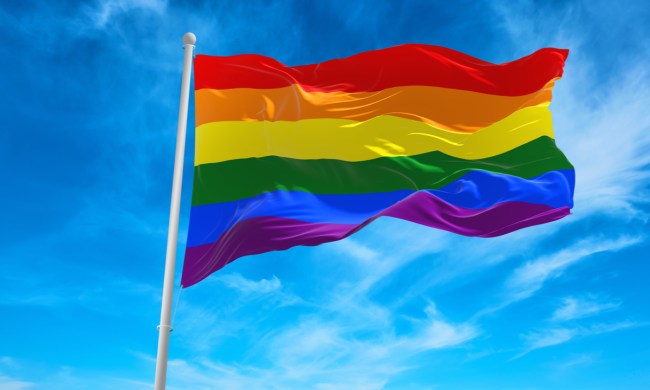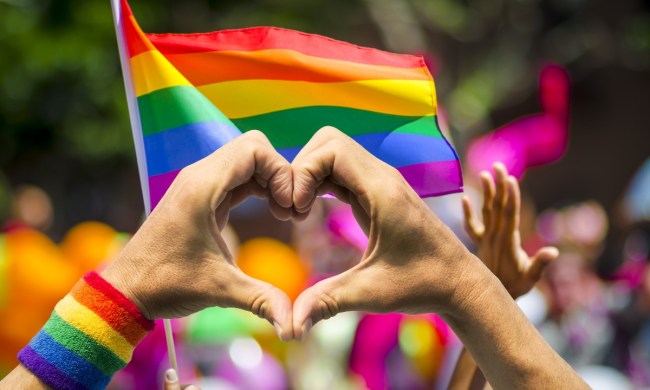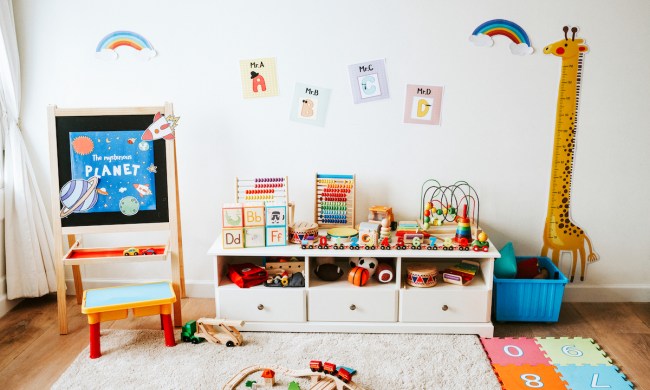Children learn about the world through many avenues, but one in their life every day is the books they read at home. The more diverse the representation in these books, the more their minds will be ready to accept anyone they meet. Millions of children have LGBTQ+ family members or are LGBTQ+ themselves, so kids of any identity should see these kids reflected in their books.
You may need to go out of your way to make sure your bookshelf is appropriately diverse, but this list makes finding those titles easy. Each one of these picture books for babies through elementary school students has one or more LGBTQ+ characters woven into a story that makes a great book on its own. They don’t take an educational tone, but rather share engaging and colorful tales that any child will love — while also happening to incorporate LGBTQ+ people.
A Plan for Pops
This picture book by Heather Smith and Brooke Kerrigan shares the delightful weekend routine of a gender-ambiguous child, Lou, and their two grandfathers who are a couple. One day, Pops falls, and we learn he’ll need a wheelchair forever. Lou and Granddad make a plan to cheer Pops up and help him return to their traditions. LGBTQ children’s book reviewer Dana Rudolph says this book for ages 3 to 5 “shouldn’t be skipped.”
From Archie to Zack
This incredibly sweet picture book for ages 4 to 8 by Vincent X. Kirsch captures an adorable elementary-school drama of two boys who each have a crush on the other, but neither has worked up the courage to say so yet. Their friends pitch in to help them profess their true feelings of affection.
Julián is a Mermaid
As The New York Times Book Review says of this widely acclaimed picture book by Jessica Love, “alongside Julián, readers learn that anyone can be a mermaid: All it takes is love and acceptance, a little imagination, and a big swishy tail.” Julián is encouraged by his abuela to express himself however he wants in a story for ages 4 to 8 that earned numerous positive reviews.
My Maddy
“Most mommies are girls. Most daddies are boys. But lots of parents are neither a boy nor a girl. Like my Maddy.” This picture book for readers ages 4 to 8 is written by Gayle Pitman and illustrated by Violet Tobacco, and it includes an educational note by Dr. Randall Ehrbar about gender-diverse parents.
Plenty of Hugs
This picture book for ages 2 to 5 peeks into the happy daily life of a two-mom family that always has enough love to share with their toddler. They visit the zoo, share a meal, and read bedtime stories in this sweet story written by Fran Manushkin and illustrated by Kate Alizadeh.
What Riley Wore
Gender-creative Riley’s self-confidence assures young readers they can experiment with their own self-expression, too. One day Riley wears overalls, another a tutu, another pajamas. When asked, “Are you a girl or a boy?” Riley replies, “Today, I’m a firefighter.” Elana K. Arnold and Linda Davick give us a gift with this picture book.
When Aidan Became a Brother
This highly acclaimed picture book for ages 4 to 7 shows what happens when transgender child Aidan gets a promotion to big brother. First talking about Aidan’s gender transition and then his transition into his new identity as a sibling, this story written by Kyle Lukoff and illustrated by Kaylani Juanita tackles big feelings with care.
Once you’ve added these books into your home, you’ll have more chances to spark child-friendly conversations about diversity. If more big feelings come up during those talks, check out our list of books for helping little ones talk about their feelings.



